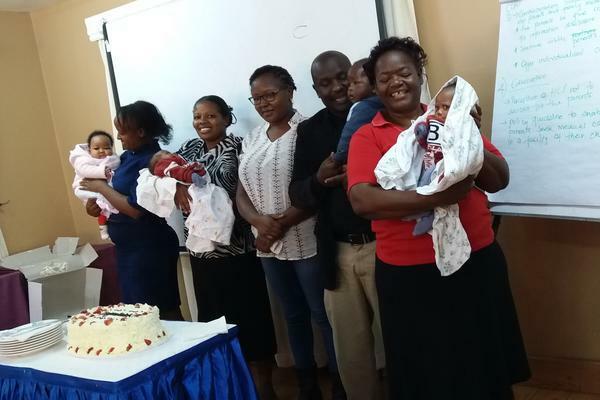
A life-changing four-year research programme, led by Liverpool School of Tropical Medicine and funded by the NIHR’s Global Health Research Programme, is helping to tackle the stillbirth crisis in sub-Saharan Africa.
Globally, 2 million stillbirths occur every year. Sub-Saharan Africa accounts for 64% of these, with women eight times more likely to experience a stillbirth than those in high-income countries like the UK.
The National Institute for Health Research (NIHR) Global Health Group on Stillbirth Prevention and Management in Sub-Saharan Africa, established in 2017, is the first programme of its kind aimed at reducing stillbirths.
The Group is a unique midwife-led research partnership between Liverpool School of Tropical Medicine (University of Manchester until 2020) and the Lugina Africa Midwives Research Network (LAMRN). Its aims were to address a critical lack of research around stillbirth and identify best practice and support for families who experience a stillbirth in Kenya, Malawi, Uganda, Tanzania, Zambia and Zimbabwe.
Many families and midwives were involved in 12 studies that looked at the risk factors associated with stillbirth, the way stillbirth is communicated to families and bereavement care and support.
Dame Tina Lavender, Professor of Maternal and Newborn Health and Director of Liverpool School of Tropical Medicine’s Centre for Childbirth, Women’s and Newborn Health, led the programme. She said:
“This was a challenging area of investigation, particularly because of the traditional taboos, myths and practices associated with stillbirth. However, it has been the most rewarding, as the small changes that are already being made in the six countries look set to have a lifechanging impact for many generations to come.”
Some of the many research outcomes include a new clinic in Zimbabwe for women who go on to become pregnant again following a stillbirth, private rooms for bereaved parents in facilities in Kenya and Tanzania, and a team of bereavement champions in hospitals in Uganda and Kenya. Audits of stillbirth have been embedded in two facilities in Malawi to improve care during labour and birth.
An educational board game called ‘Dignity’ was developed to enhance health workers’ knowledge and skills to deliver respectful care which has been tested with health workers and students in Malawi and Zambia with really positive feedback. The findings of the programme have also informed national guidelines on maternal health and stillbirth in Uganda and Kenya, and triggered inquiries into high stillbirth rates in hospitals in Tanzania. In Zambia, the MOH is using our approach to design data collection for better estimates of numbers of stillbirths in other parts of the country.
Over the course of the programme the team has shared research outputs to raise the profile of stillbirth at a local level within hospitals and local communities, at a country and regional level through events and conferences, and on a global scale through working groups. Midwifery, nursing and medical schools are building the findings and work into course curriculums, influencing the training of nurses, midwives and doctors to give better care to women and families.
Community engagement and involvement, also referred to as Patient and Public Involvement, widely used in other projects and programmes in Africa for many years, was virtually unknown in the context of stillbirth research in sub-Saharan Africa, at the outset of this programme was central to its success.
Dame Tina added:
“Working with parents, health workers, communities and governments through our Community Engagement and Involvement groups was a real highlight. It allowed those most affected by stillbirth to have their voices heard, help us frame our research and questions in culturally sensitive ways and develop services that directly address their needs.”
Angela Chimwaza, LAMRN Chair, said:
“I am very proud of the work conducted in the six countries to develop best practice to support women and families. The research has had a huge impact on the lives of so many already. Although this programme of work was multi-disciplinary, it was developed, led and delivered by midwives. Taking on this work has been an empowering experience, giving midwives the confidence that they can make a real difference to women and their babies in the future.”
Dame Tina concluded:
“I am so incredibly proud of what the team has been able to achieve. Midwives now have the skills and confidence to lead research in their countries, families are getting better access to the care that they need and deserve, and stillbirth is now high on the agenda so more women will have a better chance of a healthy and happy birth, long after our programme comes to an end.”
The study directly supports the governments of Kenya, Malawi, Uganda, Tanzania, Zambia and Zimbabwe in their aims of reducing the stillbirth rates from an average of 29 per 1,000 to less than 12 per 1,000 by 2030.
This research was funded by the National Institute for Health Research (NIHR) (16/137/53), a major funder of global health research and training, using UK aid from the UK Government to support global health research. The views expressed in this publication are those of the author(s) and not necessarily those of the NIHR or the UK Department of Health and Social Care.”